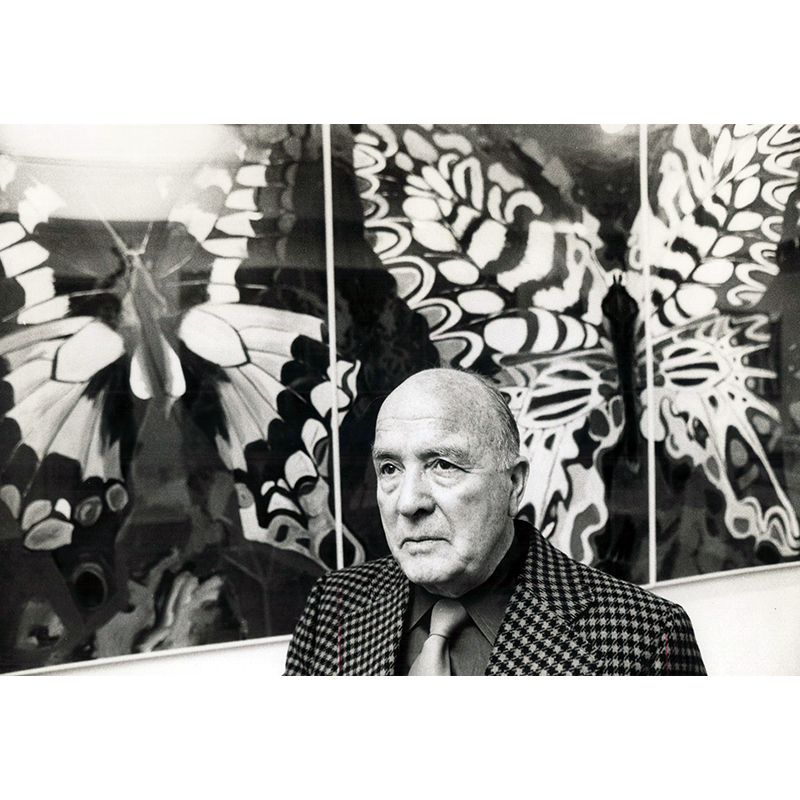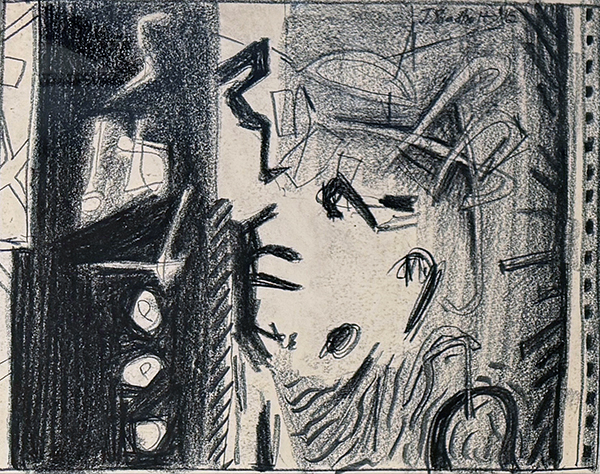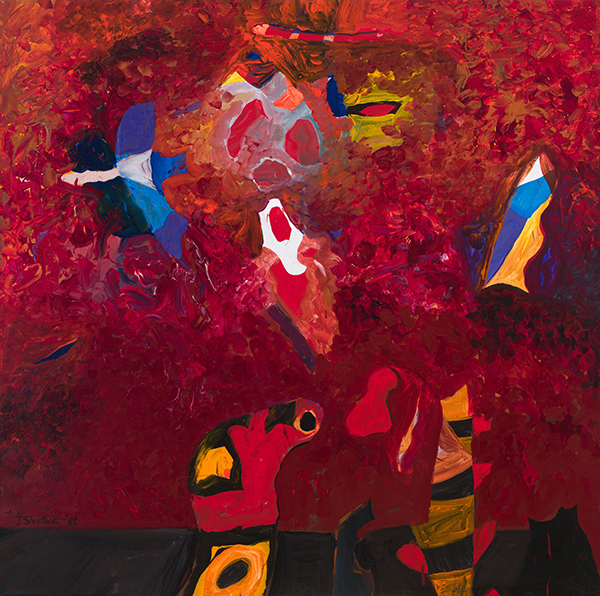Jack Shadbolt
Jack Shadbolt (1909–1998) – Artist Biography
Jack Shadbolt was a painter and draughtsman. His work reflects his travels and experiences; be it his youth in British Columbia, his studies in New York or his work overseas during World War II.
Shadbolt was born in Essex County in the village of Shoeburyness, England. After immigrating to Canada, in 1912 his family settled for two years in the interior of British Columbia, and then moving to Victoria in 1914. His father was a sign painter, and the young Shadbolt often helped him with his work. His mother was a dressmaker. Later the influence of being surrounded patterned fabric remnants would become apparent in his work, Umbilicus.
He began his artistic studies at Victoria College in 1927. In 1930 he met Emily Carr, who would become a life long influence. For Shadbolt, schooling was ongoing. He studied at the Vancouver School of Decorative and Applied Arts (1931) with Charles H. Scott and Fred Varley. Later he traveled to England and took classes at the Euston Road School (1937), followed by studies in Paris at The Académie-Grande Chaumière and at the André Lhote School of Art (1938).
His gradual disillusionment with the Group of Seven combined with the arrival of World War II caused his practice to shift towards social realism. In 1942, after being unable to attain a position as a war artist, he enlisted in the army; all the while he documented his experience through sketches. After several departmental transfers he was sent to London in 1945 to work for the Canadian Army War Artists Administration, where he sorted and catalogued photographs of concentration camps. Both the ravaged city and his daily work left a strong impression on the artist, the effects of which would appear in his work for years to come, The Victim.
Post war, Shadbolt returned to British Columbia with his wife Doris. In 1948 they moved to New York. There Shadbolt attended classes at the Art Students' League (1948-9) as well as the "criticisms" of Hans Hofmann. His time in New York left an indelible mark on his practice; Picasso, surrealism and early Abstract Expressionism were strong influences, Presences after Fire.
Shadbolt was an influential teacher. He taught both painting and drawing at the Vancouver school of Art. In 1955 he was the first instructor at the Emma Lake workshop, Regina College, Saskatchewan.
Jack Shadbolt represented Canada in the Venice and Sao Paulo Biennials, the Carnegie International at Pittsburg and at the Brussels and Seattle World fairs. In 1972 he was appointed Officer to the Order of Canada. In 1988 the Jack and Doris Shadbolt Foundation for the Visual Arts was formed; it supports an annual awards program. To reflect the Shadbolt's lifetime of support to the arts, the Burnaby Arts Centre was renamed the The Shadbolt Centre for the Arts, in 1995.
Bio c/o The National Gallery of Canada
Awards & Honours:
1957: Guggenheim Award
1972: Officer to the Order of Canada
1977: Molson Prize
1990: Gershon Iskowitz Award
1989: Freeman of the City of Vancouver
1990: Order of British Columbia
Artist Specialization: Building on Emily Carr's somewhat romanticized way of experiencing the landscape, Jack Shadbolt came to hold a political view of man's place in nature, and the competing claims of aboriginal and European settlers - a contest that still animates public life today and continues to be central to the art of British Columbia, in particular. Shadbolt - as his paintings attest - also saw the landscape as riven by competing interests, and one can read his paintings and drawings as foretelling the politically charged works of the leading contemporary B.C. artists of today.




